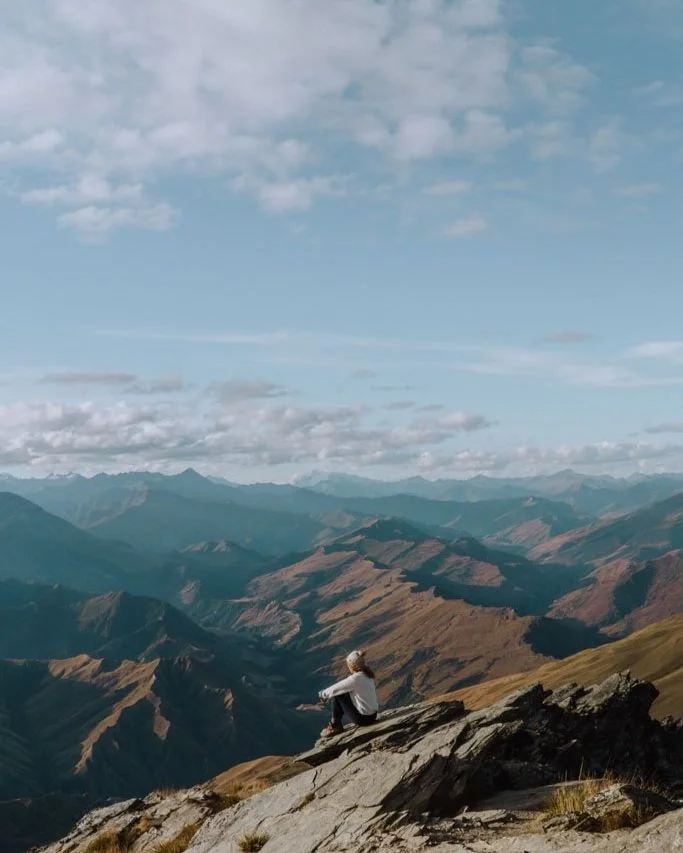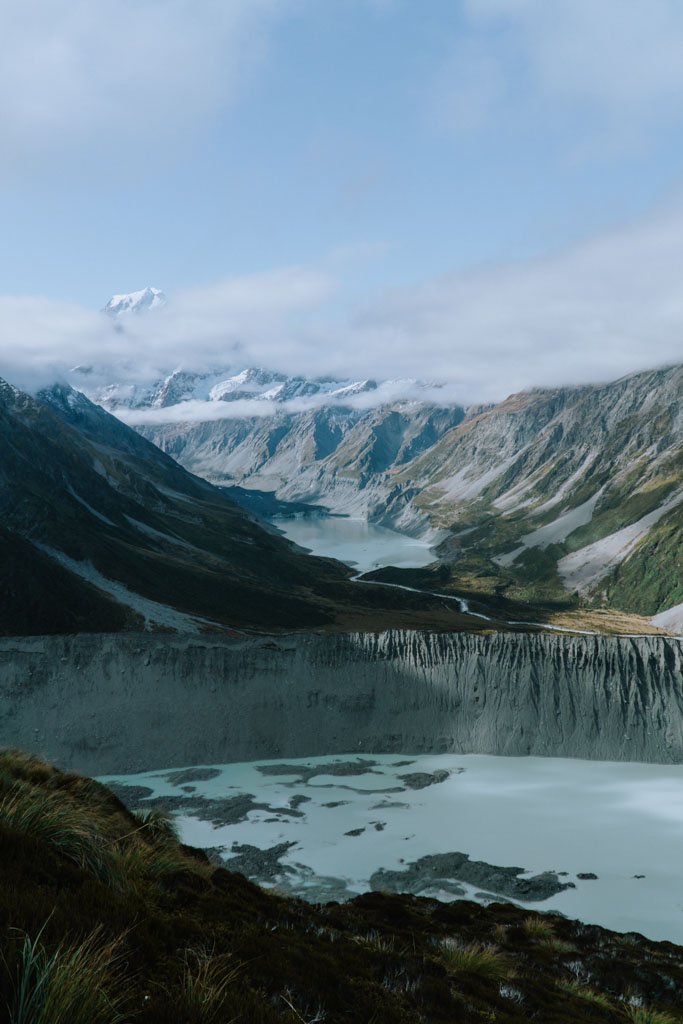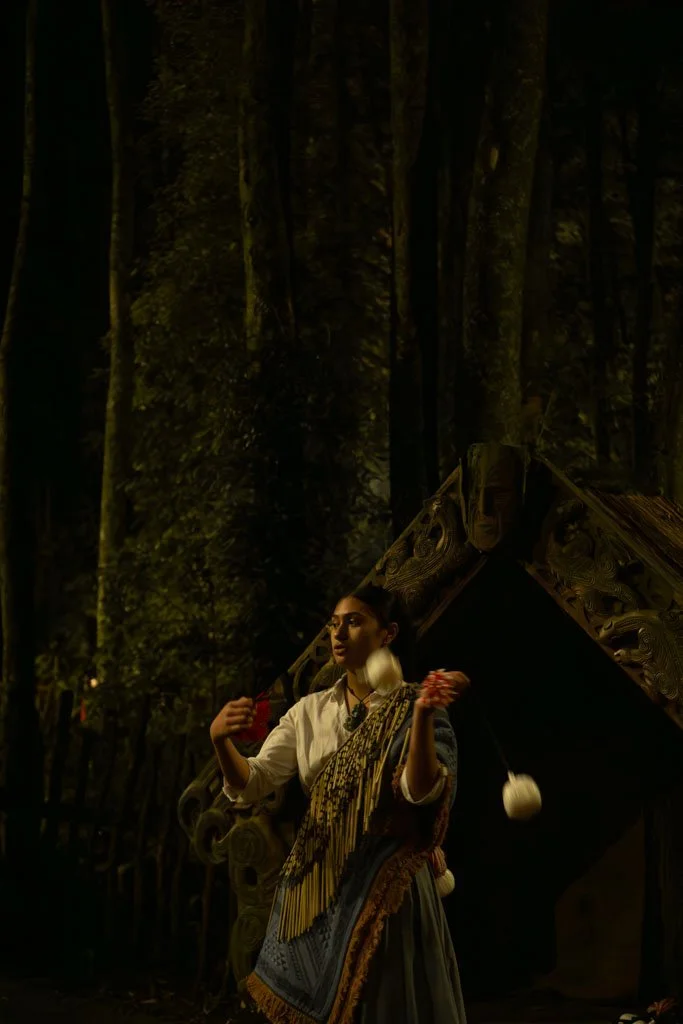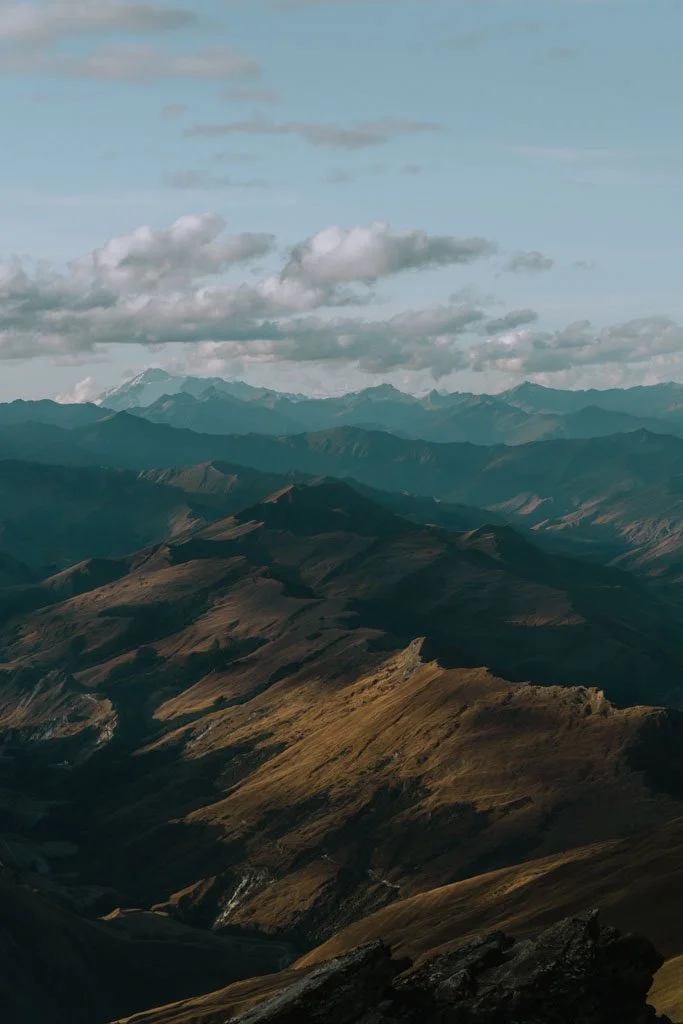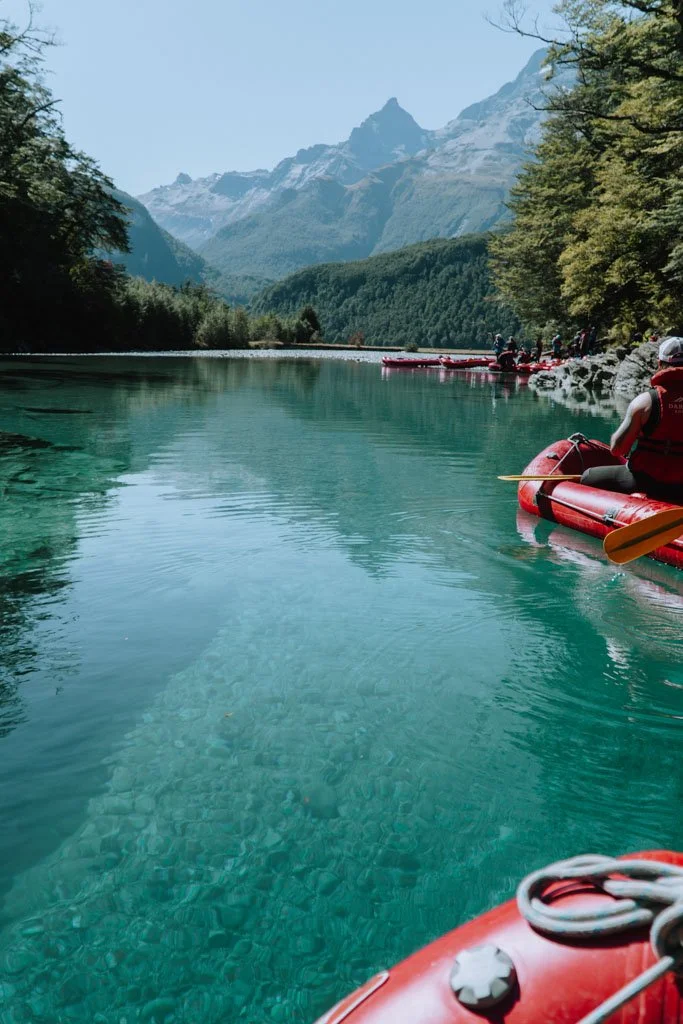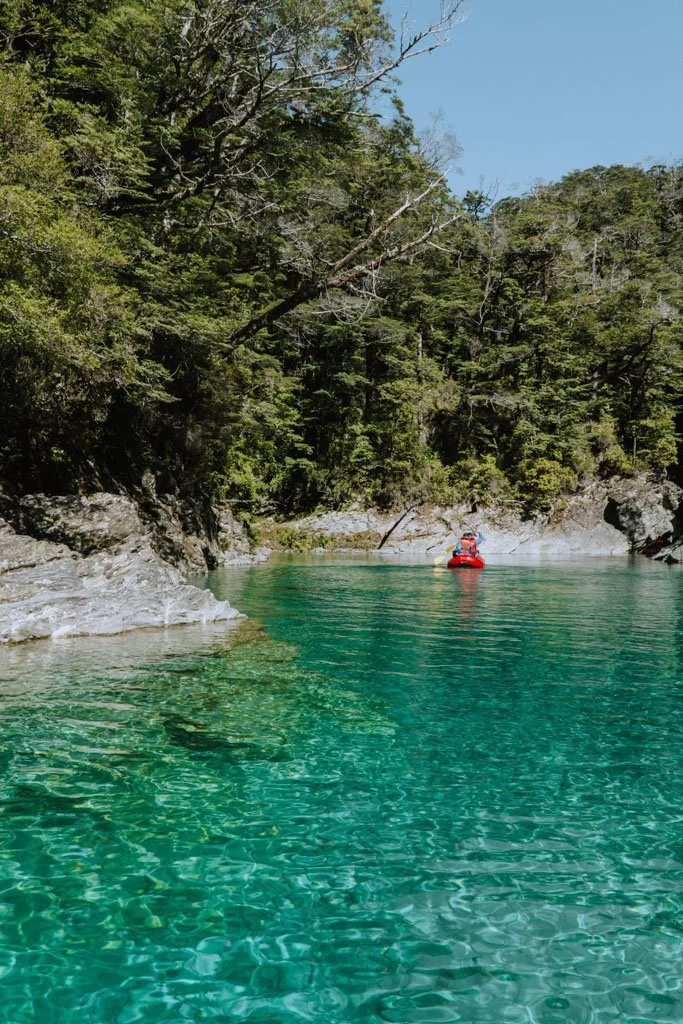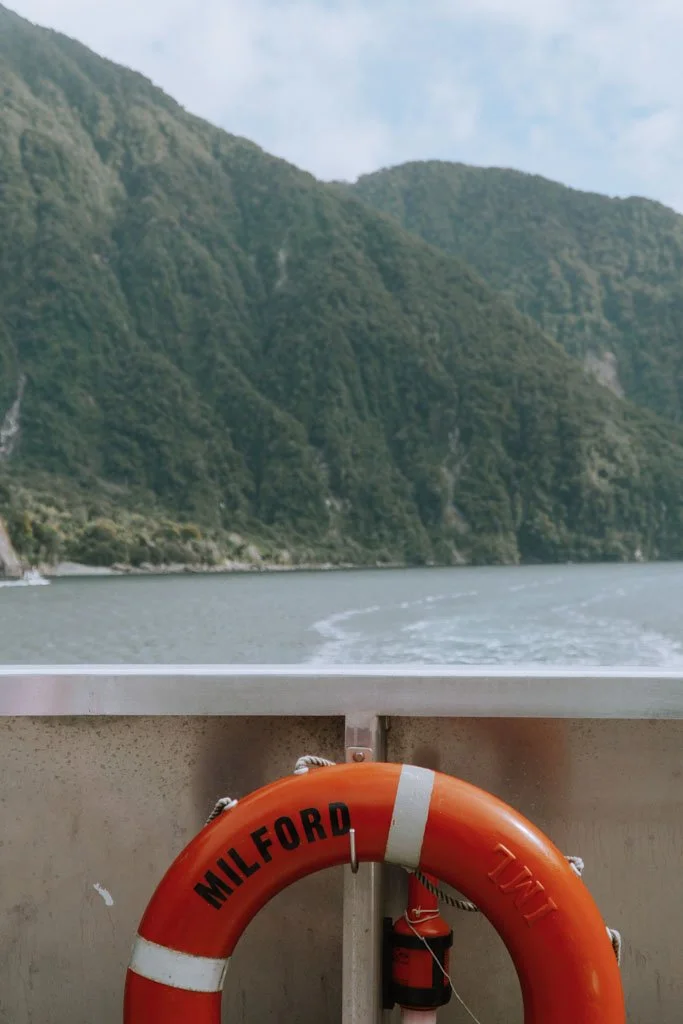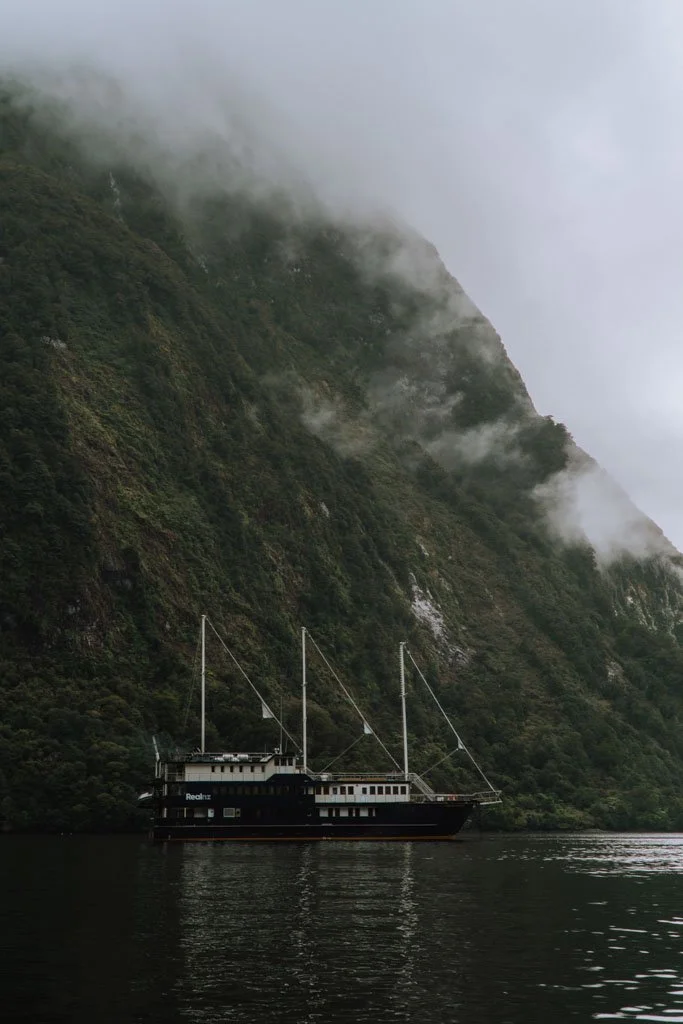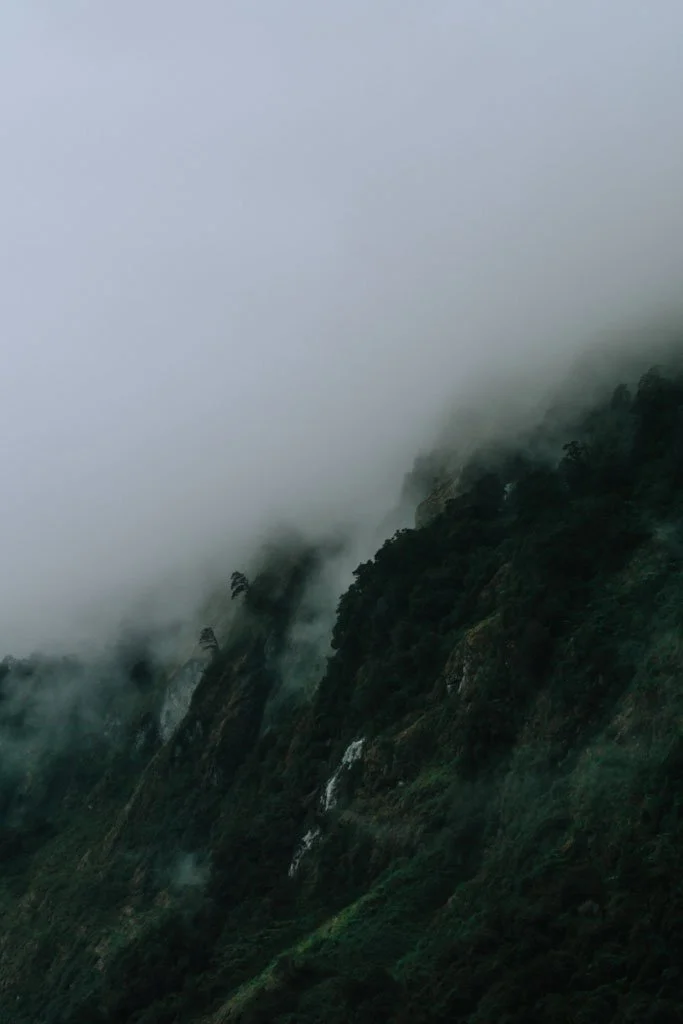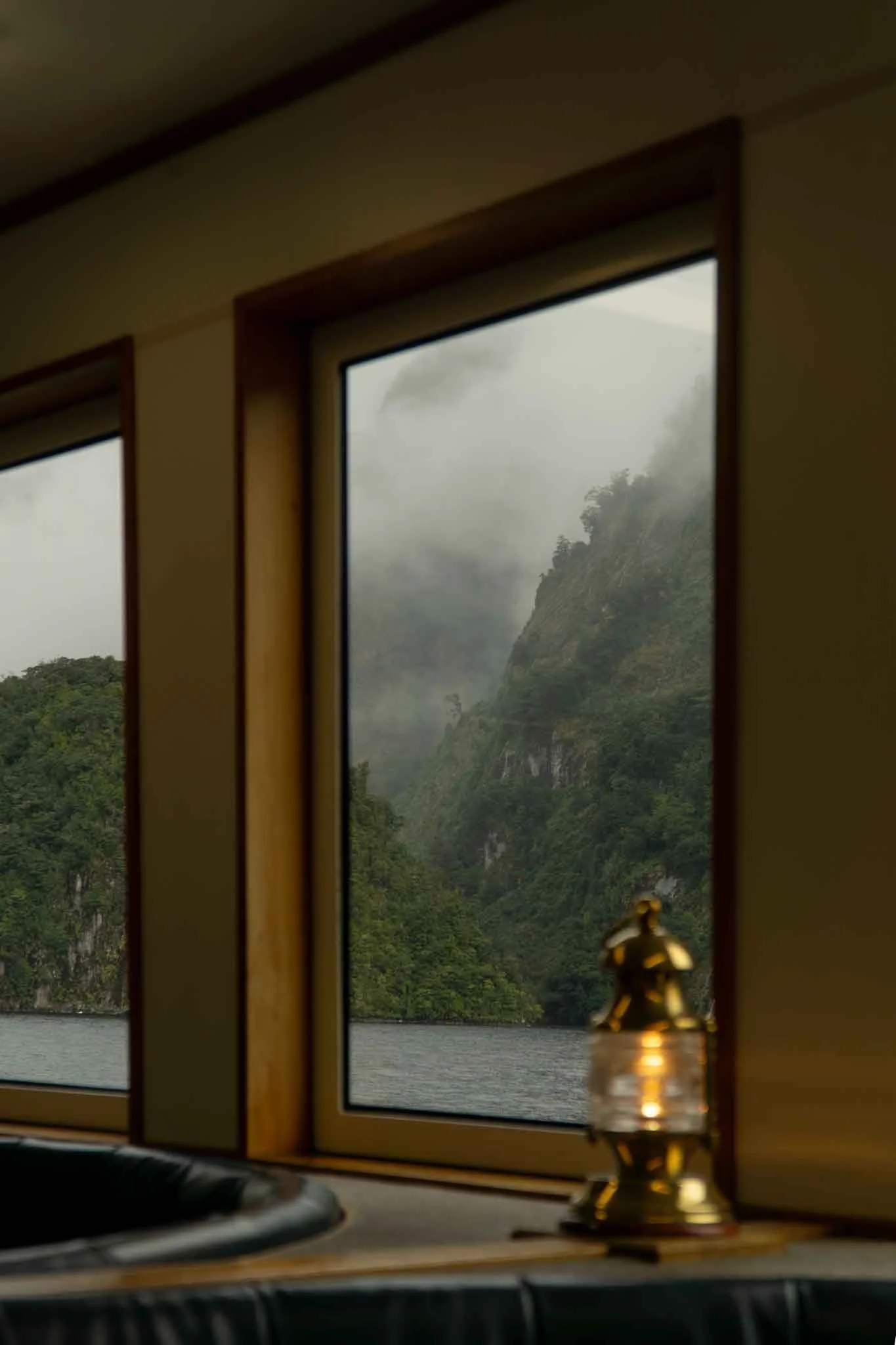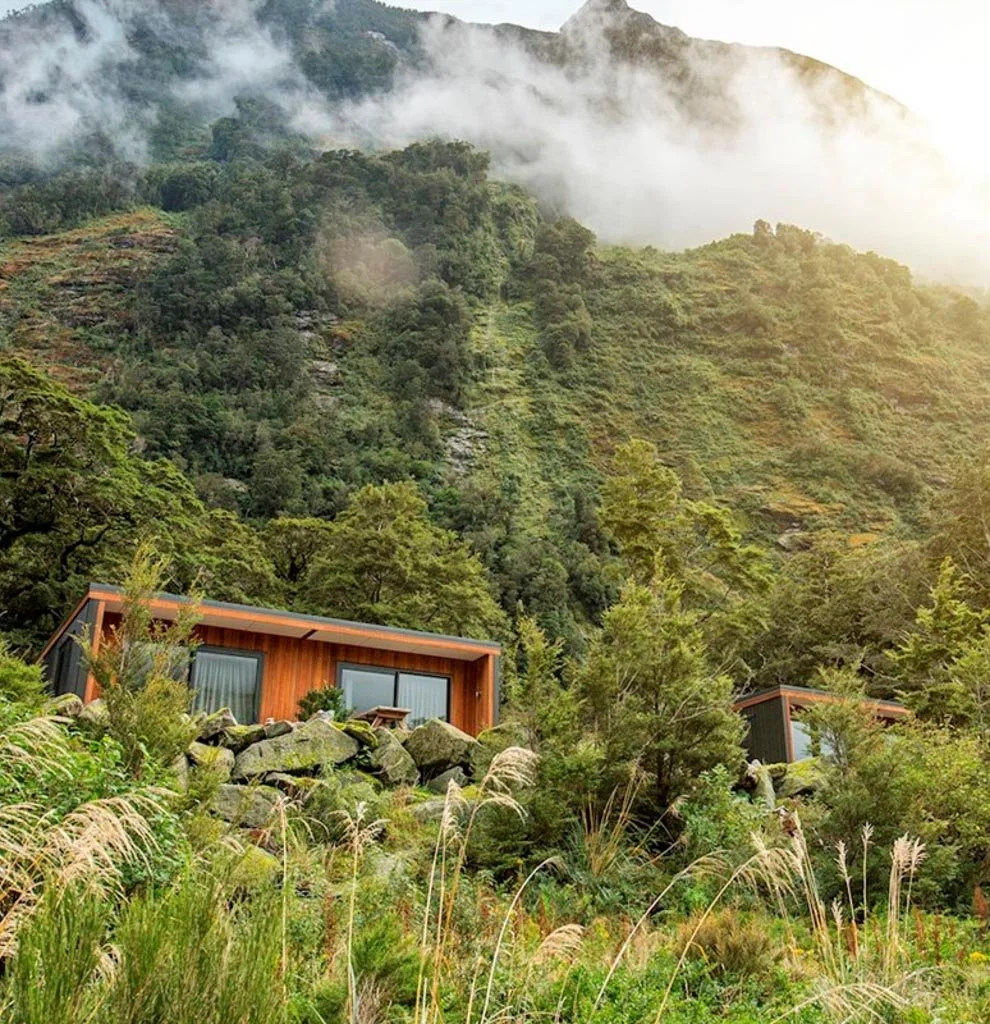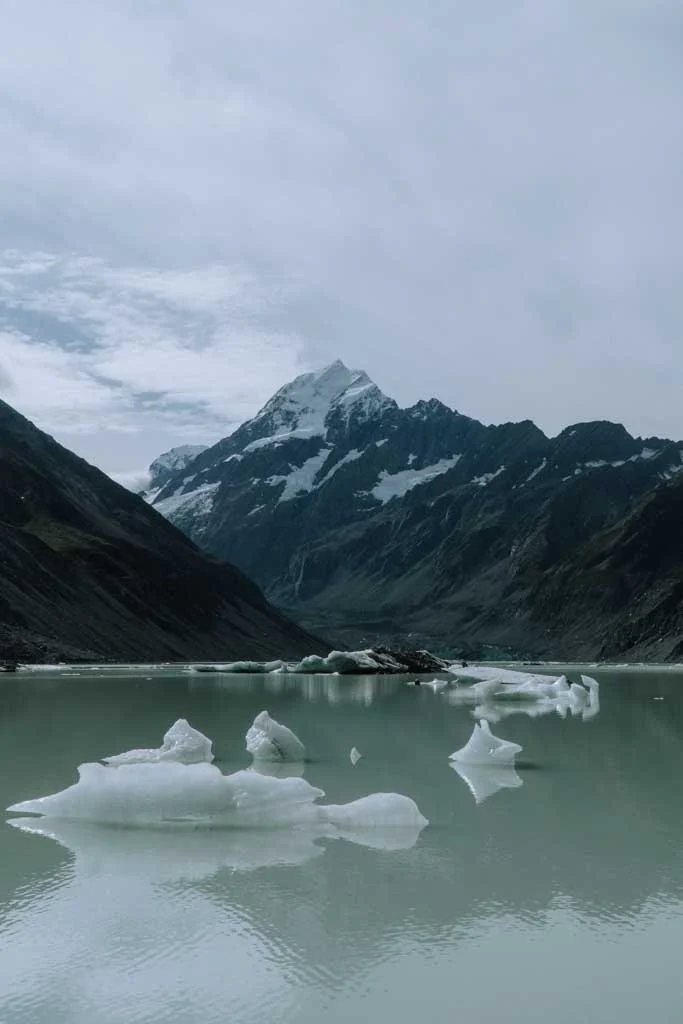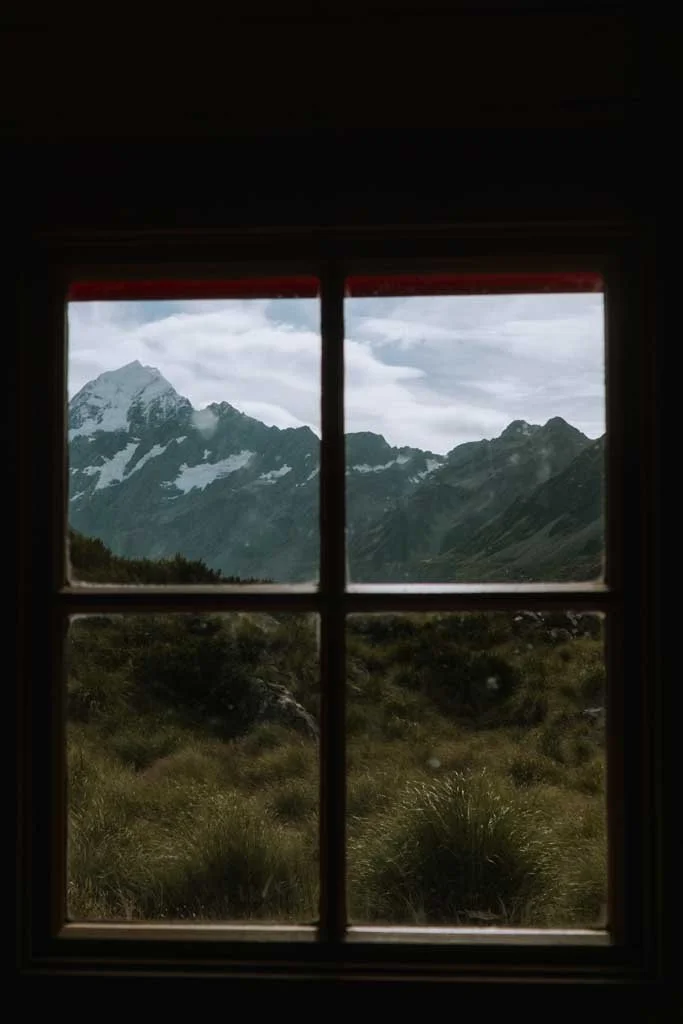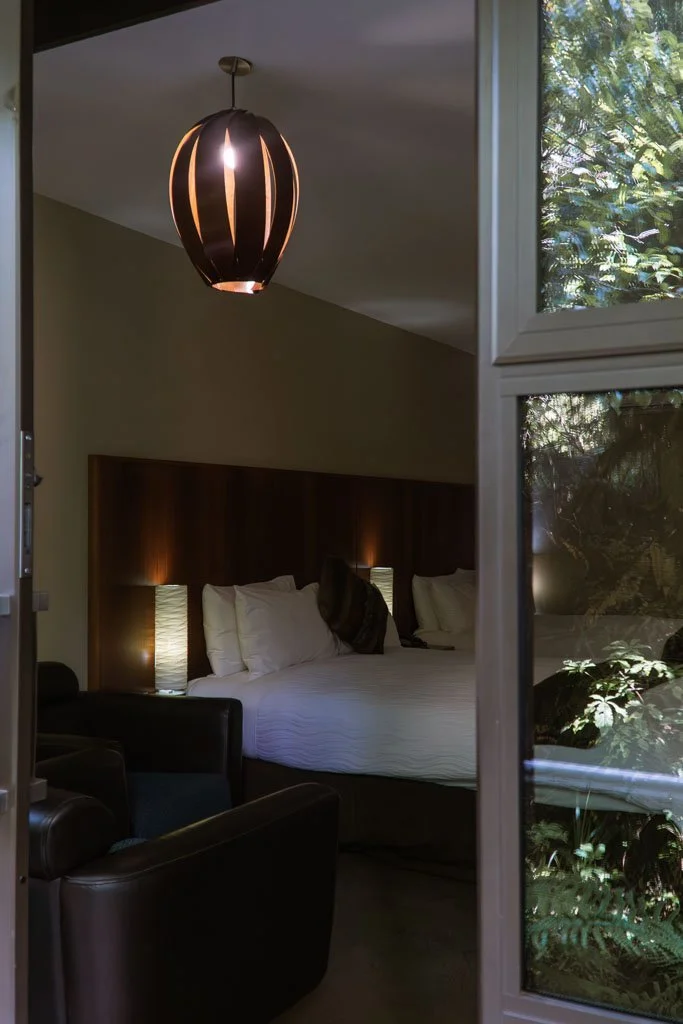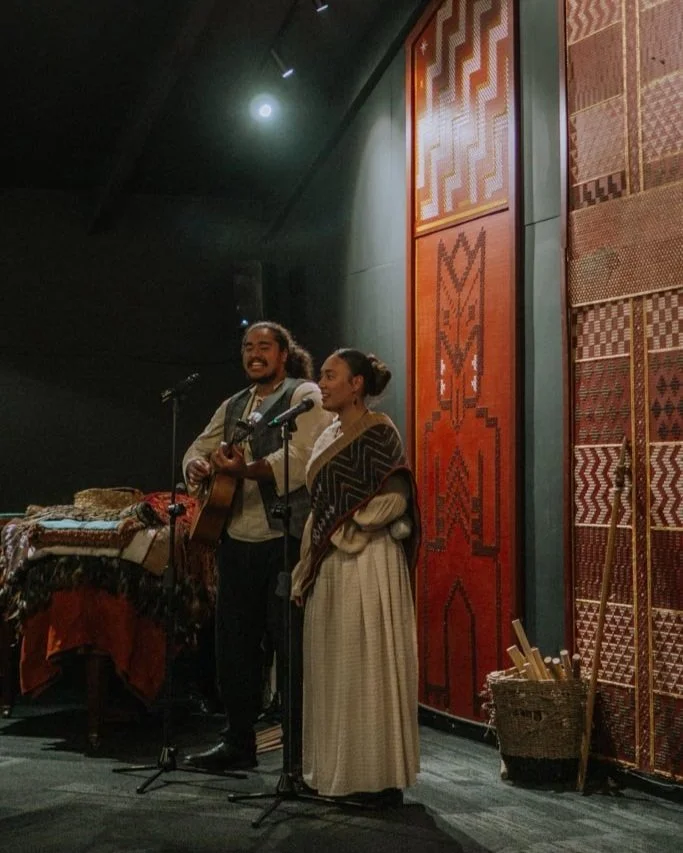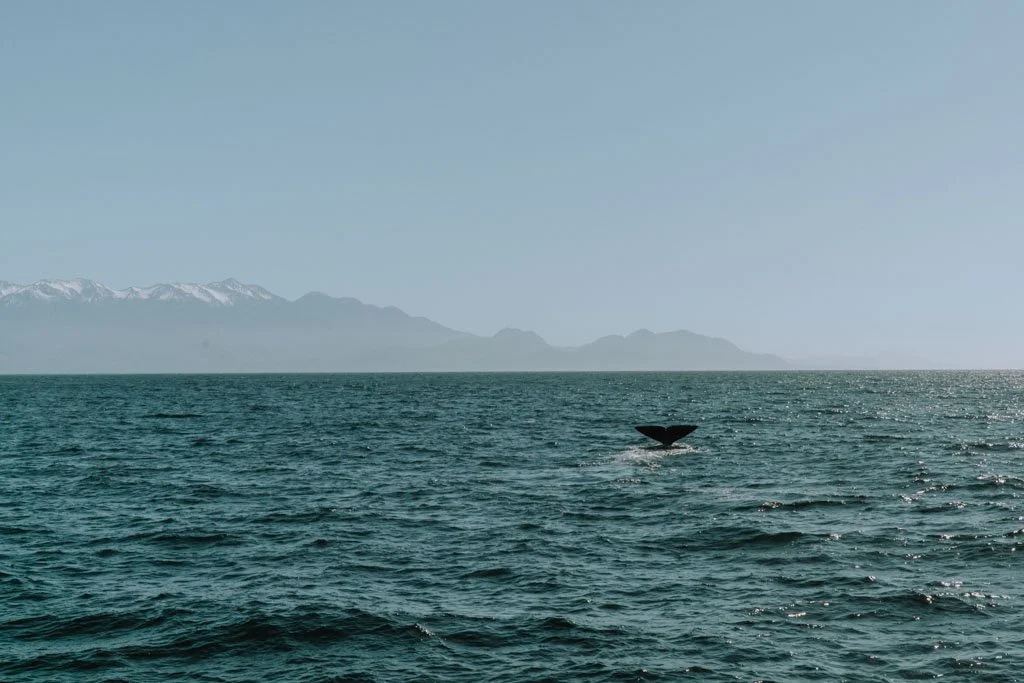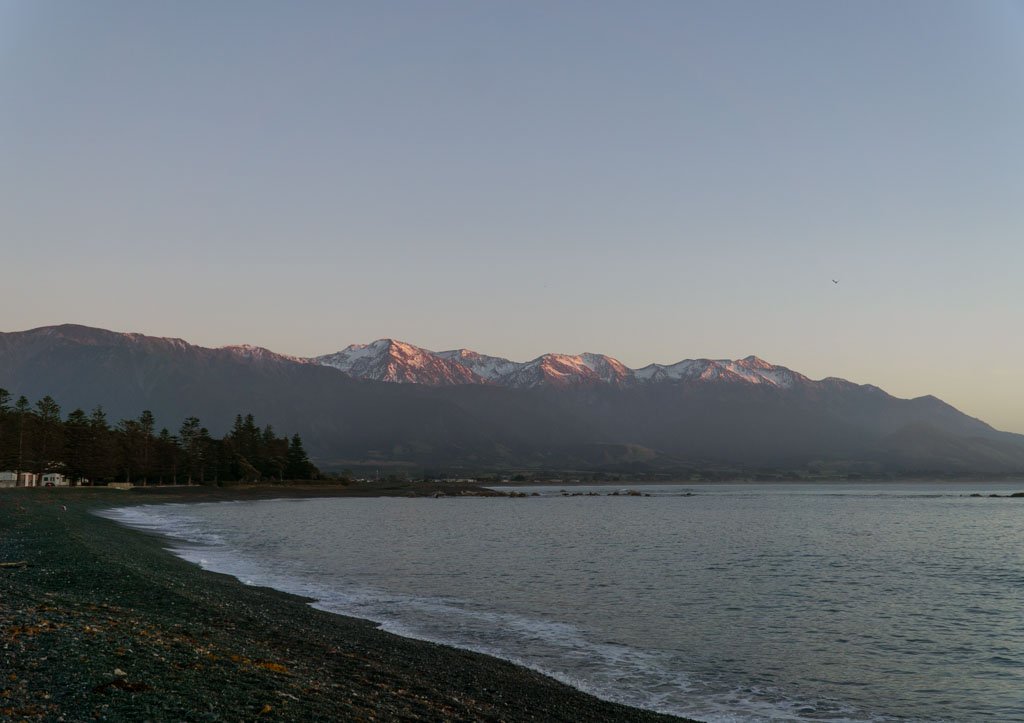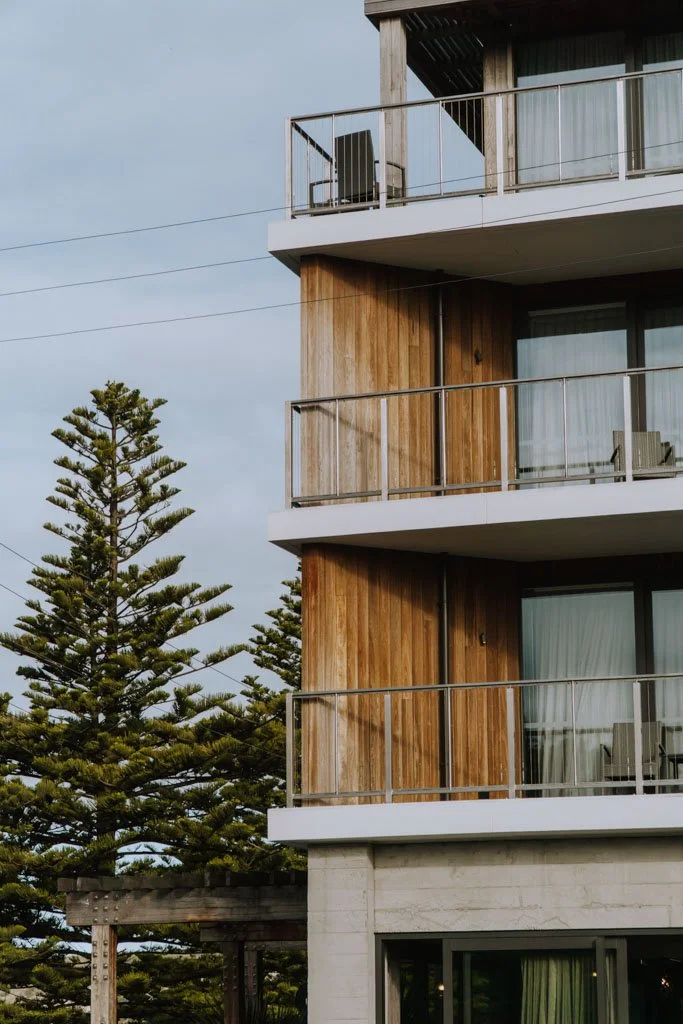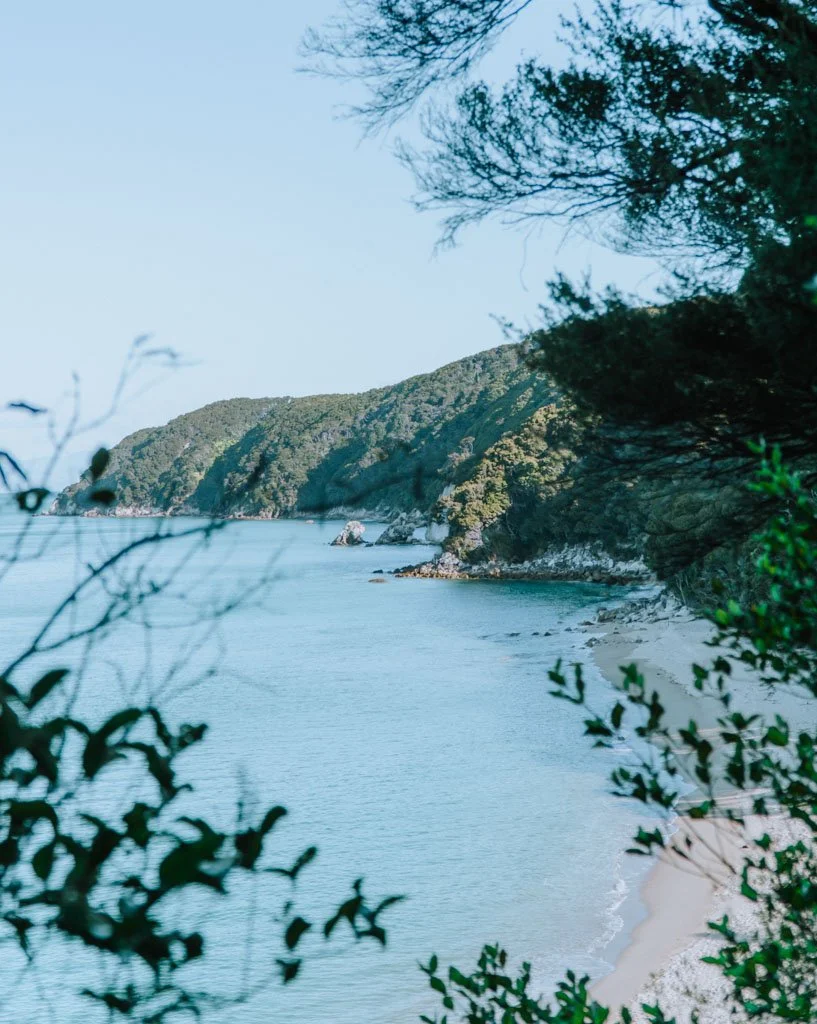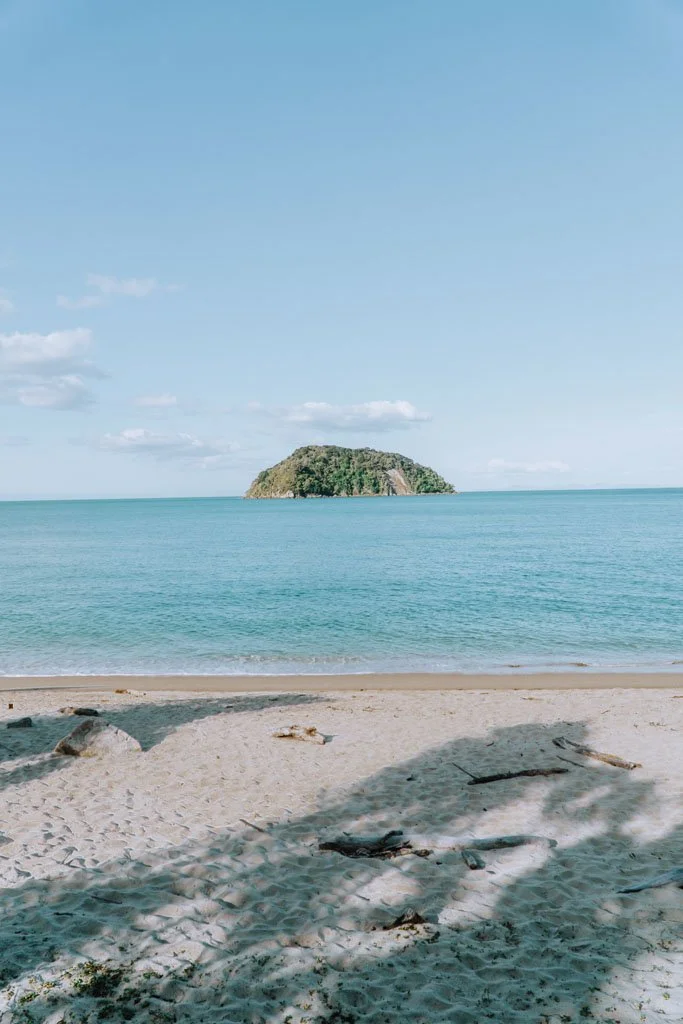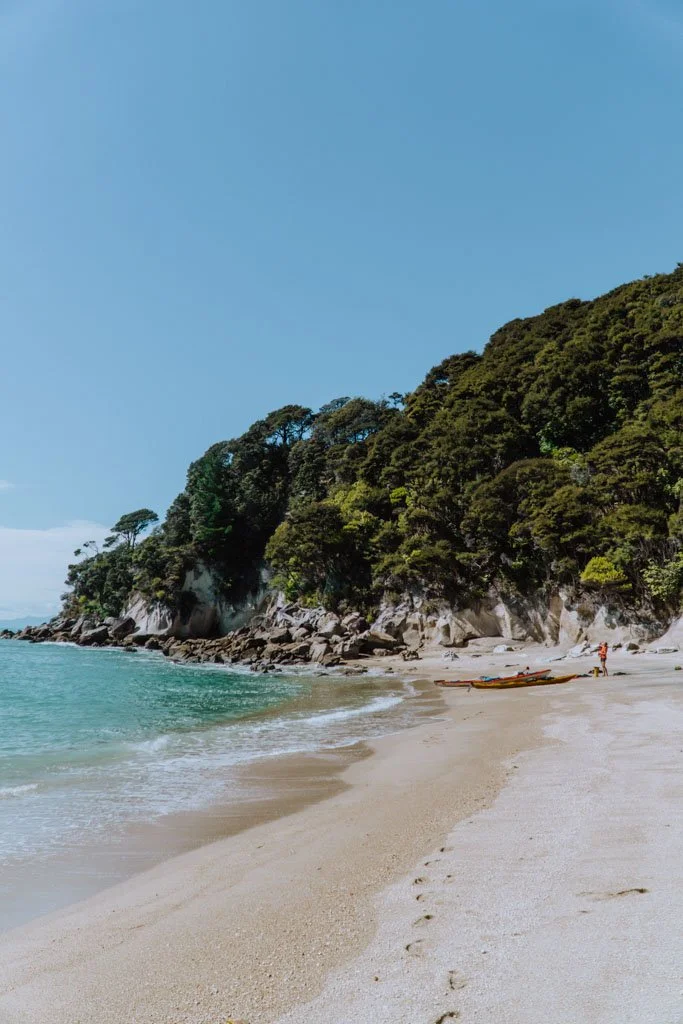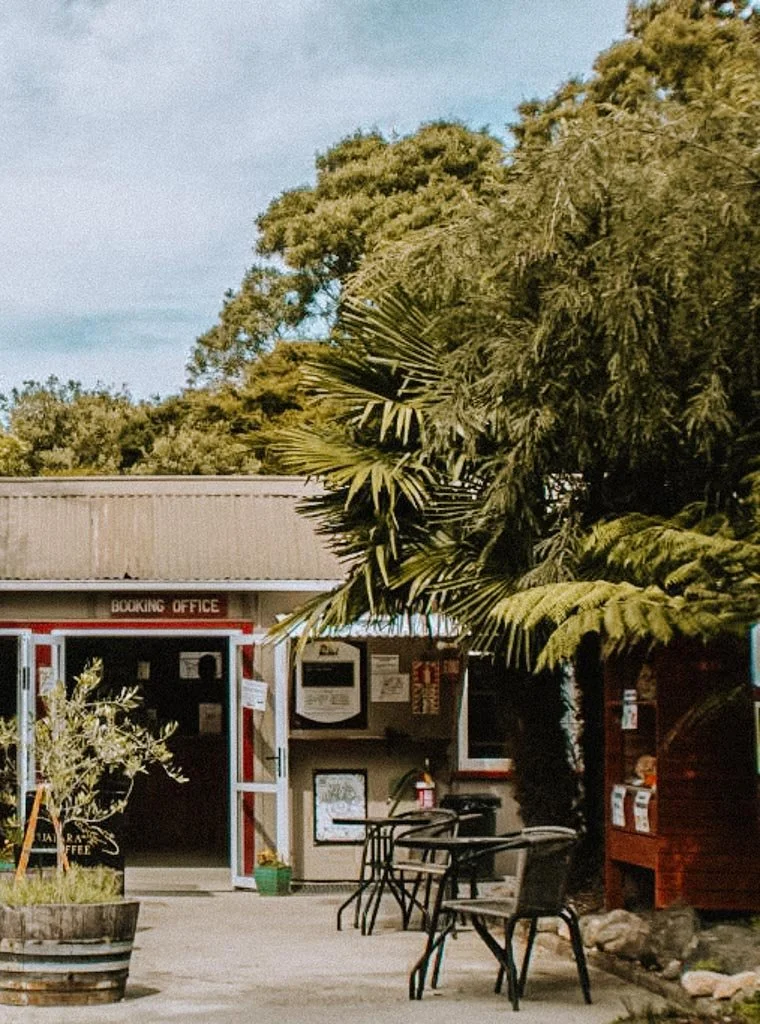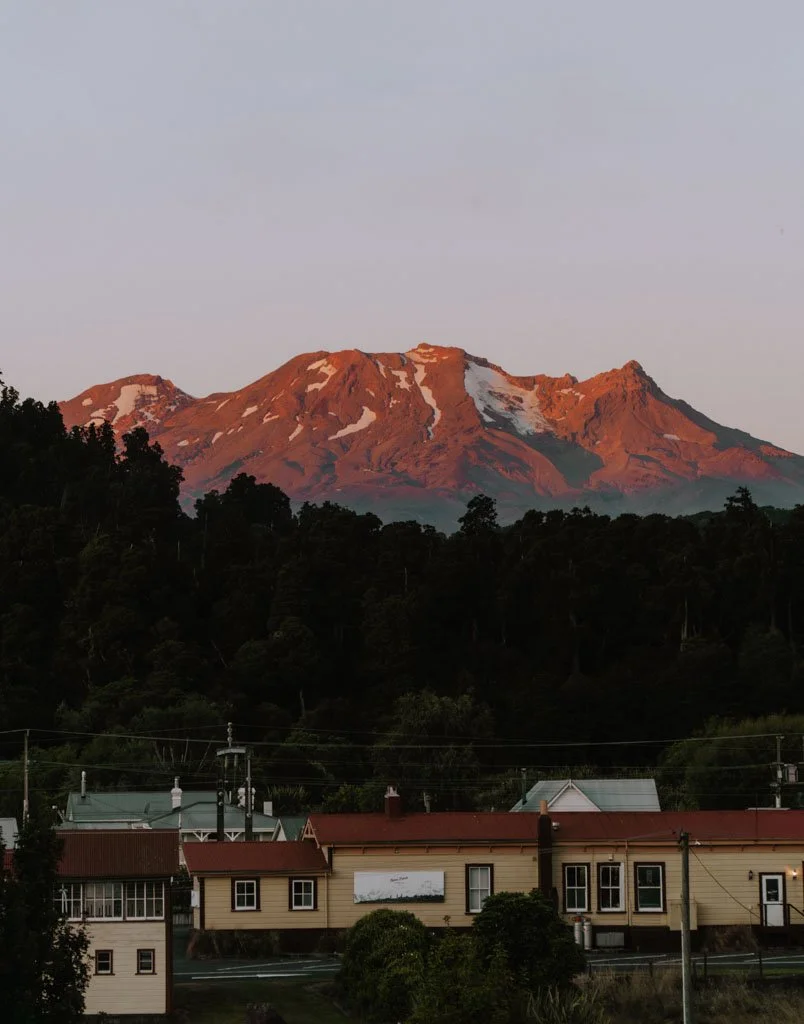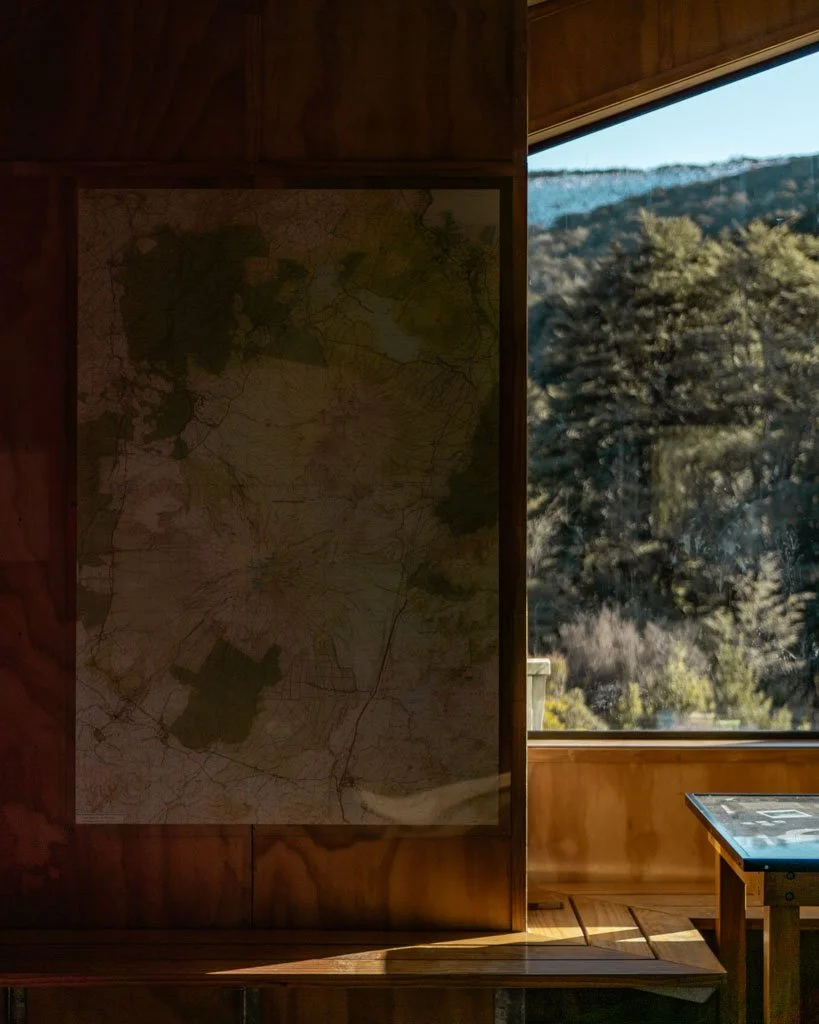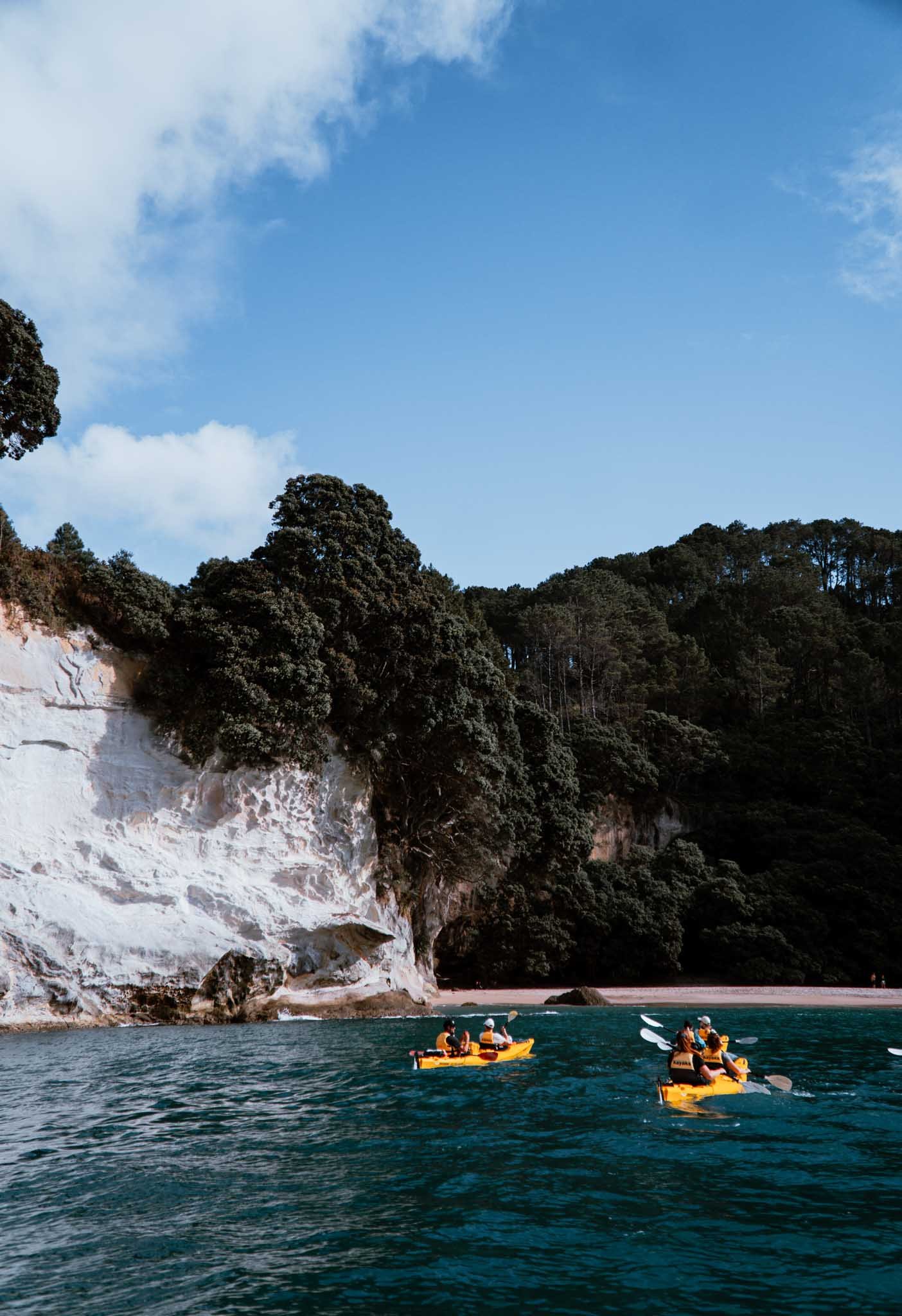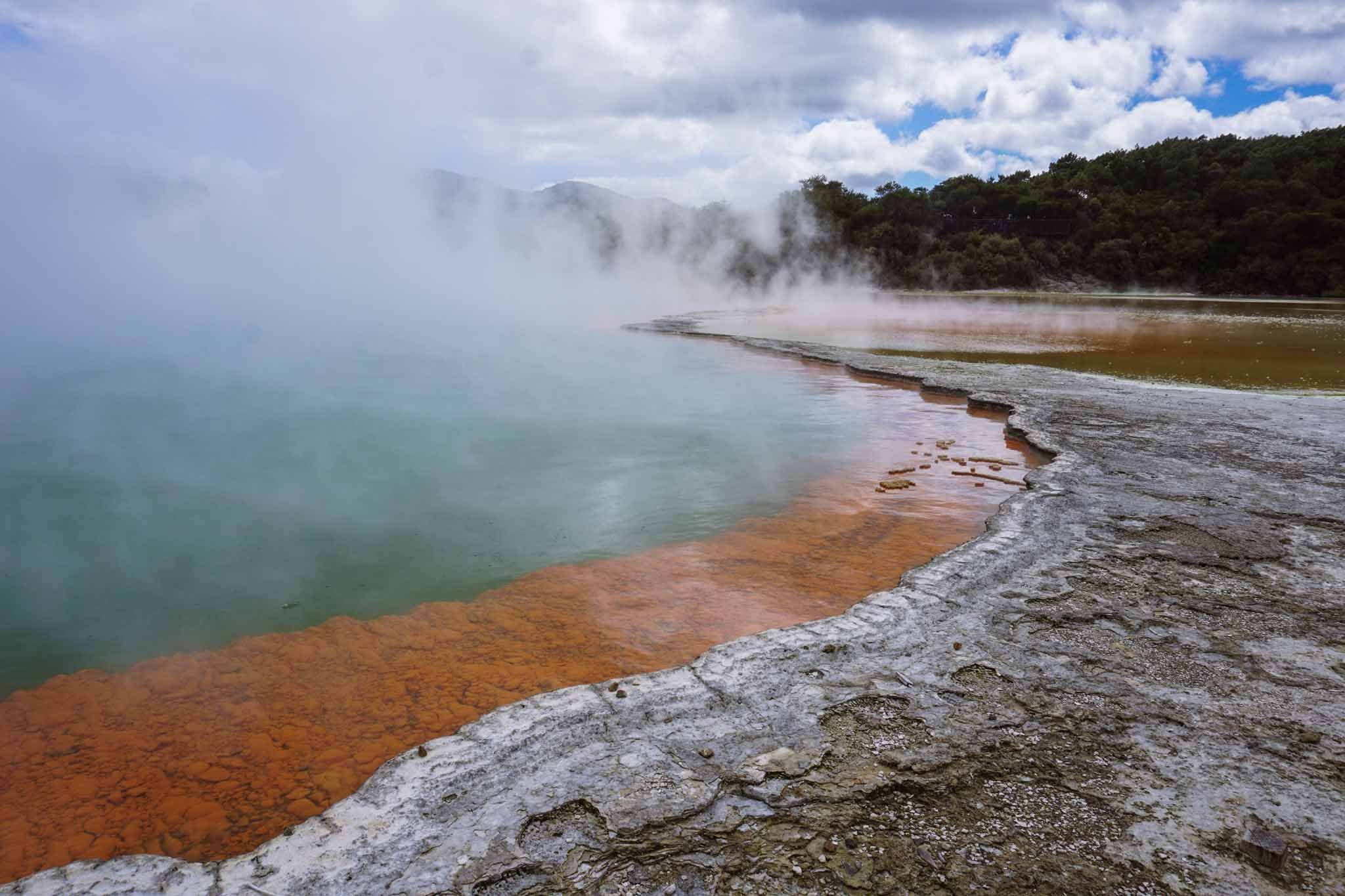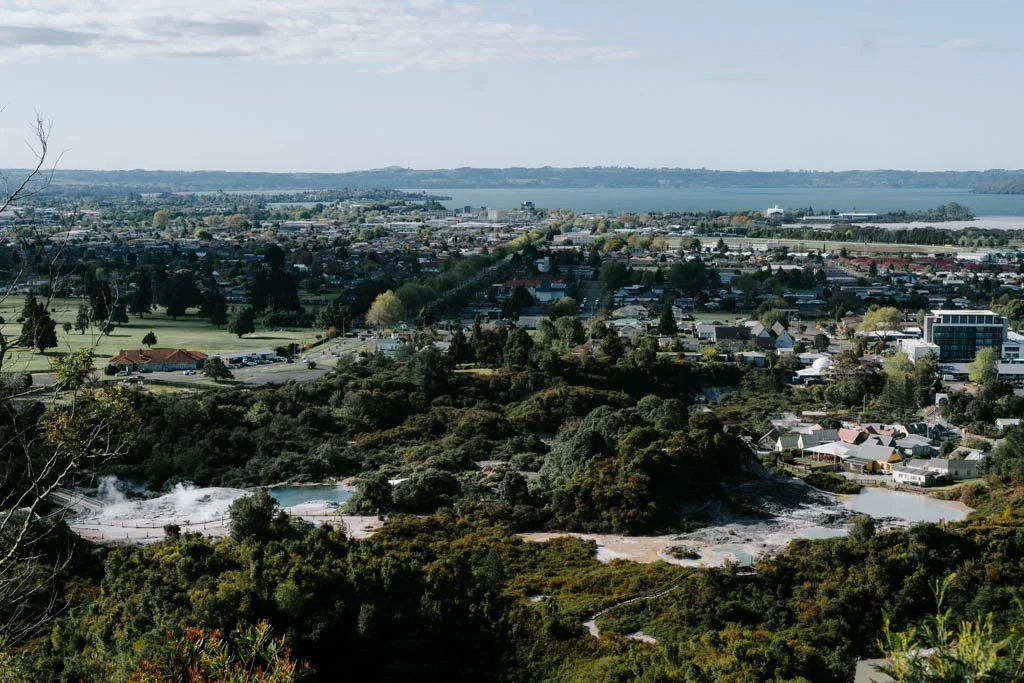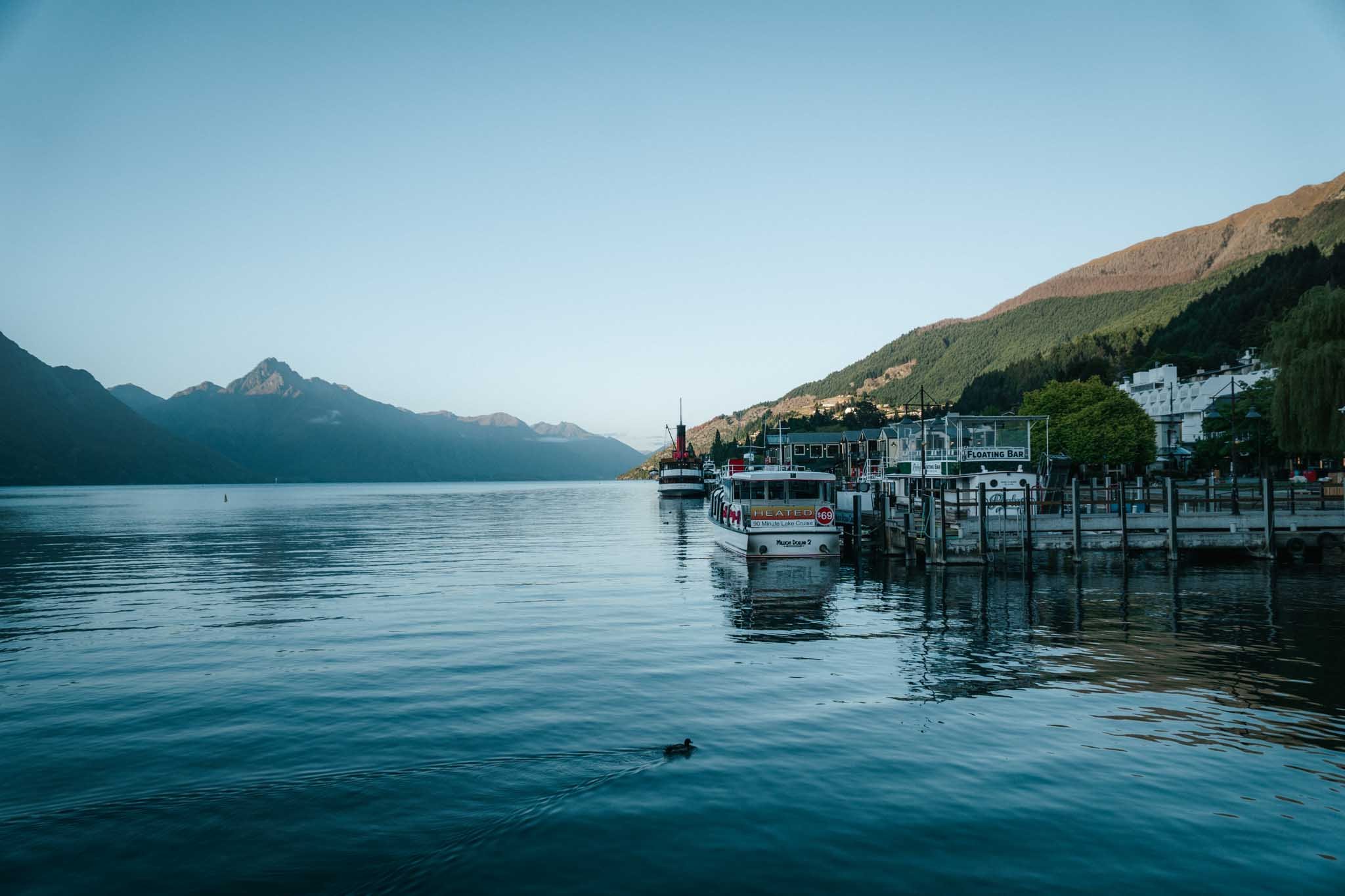Where to go in New Zealand on your first visit
These are the places and things I recommend for first time visitors — from mountains, to glaciers, to sea
At the peak of Ben Lomond, in Queenstown — the obvious choice of destination for first time visitors
Disclosure: There are affiliate links in this article, which means I may make a small commission if you book through those links. Thanks for your support.
New Zealand is surprisingly big — a little bigger than the UK, only a little smaller than Italy.
To make things more complicated, destinations are spread out across two distinct islands. And there are so many wonderful places.
Narrowing down where to visit on your first trip can be tough.
I’ve been travelling around New Zealand for years and there are still places I haven’t seen, and that I’m excited to visit (on my list at the moment — getting to Chancellor Hut, Rakiura/Stewart Island, a few more hikes in Aoraki/Mount Cook that I have yet to tackle).
Doubtful Sound — Fiordland is usually on first-time visitors’ itineraries
So, I understand the struggle of choosing where to go, when you only have a short time.
Hopefully I can help you select a few good options for your first visit, or at least start to get the lay of the land and figure out how to piece your itinerary together.
The classic itineraries for first time visitors usually touch on Auckland, Christchurch, and Queenstown — the three main hubs.
The road from Queenstown to Aoraki/Mount Cook National Park
The list of destinations below all fit into an itinerary from/to these hubs, and they are all places that truly stand out to me (I don’t have the eyes of a fresh visitor, but after years of travelling New Zealand, these are the places I still fall in love with each time).
Although all of these places come with the caveat that they are among the busiest places to visit, as they are so popular. I would also encourage you to mix in a few lesser visited places as well, so you get a balance of touristy/busy and quieter.
I just want to quickly caveat that none of these places are absolute ‘must sees,’ or ‘unmissable.’ You can see some, or all of them — either way you’ll have a great time.
Don’t stress about seeing everything, just pick a couple of places that really draw you in.
Classic routes for first-time visitors
A bonus tip — take a warm jacket, even in summer
To give you an idea of how you might link some of the destinations below, here are a few of the more common routes around New Zealand.
Christchurch to Queenstown (or vice versa) via Aoraki/Mount Cook
Queenstown to Christchurch via the West Coast glaciers
Auckland to Waitomo and Rotorua — a neat trifecta of North Island highlights
You can also expect to move around most days. The places I have suggested visiting below are all pretty spread out. I usually end up driving 2-4 hours per day on road trips, occasionally spending two nights in one spot to rest.
Moving around so much makes it hard to have a ‘home base.’ You probably won’t spend more than 3 nights anywhere, if you want to see a range of things (unless you’re lucky enough to have a month long holiday!).
This moving around is what makes renting a campervan so enticing. We have great camping infrastructure, and in a way you’re taking your home around with you — less constant packing and unpacking in hotel rooms. Search prices and look at models on Motorhome Republic.
Get itinerary help
If you are feeling very lost and struggling to decide where to go for your first New Zealand trip, feel free to reach out to me. I offer itinerary planning consultations, which is essentially an hour or two where we talk through your trip and I help you map out your itinerary.
If you don’t have the budget for a consultation or just have a couple of smaller questions, feel free to contact me and I’m happy to help anyway.
North or South?
The North Island has geothermal parks and more Maori culture
The South Island has better hiking and incredible mountain ranges
For your first visit, I would probably recommend spending more time in the South Island — especially if you only have one or two weeks.
However, both islands have something distinct to offer, and it can be nice to get more of a sense of New Zealand as a whole. For example, you are much more likely to experience Maori culture in the North Island than the South.
The North Island is where you will find Maori village experiences, like this one at Te Pa Tu in Rotorua
If you have three weeks or longer, I would definitely suggest visiting both islands.
If you’re short on time, flying between the North and South Islands can help you pack more into your trip. From Rotorua, a popular place to visit in the North Island, you can fly directly down to Christchurch.
Queenstown: The top place to visit for your first New Zealand trip
The number one place to visit on your first trip to New Zealand is Queenstown.
There’s a reason Queenstown is the adventure hub of New Zealand — from here you can jet boat, bungy jump, sky dive or do any number of wild activities.
It’s also a beautiful town, even if it has something of a resort vibe (this is the most touristy part of New Zealand). Surrounded by mountains and right on a lake, this is the quintessential scenery most people think of when they think of New Zealand.
Ben Lomond is a peak overlooking Queenstown — you can start the trail from the town itself (but I recommend taking the gondola up and starting from the Skyline centre, to save your legs)
The town also makes an excellent base for exploring some of the best activities the country has to offer. From Queenstown, you can do some great day trips. This is a little unusual for New Zealand, as most of the towns are far away from the best sights, which tend to be in nature.
Going ‘funyakking’ is one of the coolest day trips you can do from Queenstown
You could stay as long as five days in Queenstown, exploring the area (although if the adrenaline activities and commercialised feel of Queenstown don’t appeal, you might not want to stop here at all).
Milford Sound is a full day tour from Queenstown, and you can also visit the vineyards of Central Otago, head to the historic village of Arrowtown, and visit Glenorchy further down the lake.
One of the coolest day trips you can do is a funyak tour in Mount Aspiring National Park, just beyond Glenorchy. Jet boat up the Dart River, and then kayak back down in the inflatable ‘funyaks.’
If you don’t plan on doing any long hikes, this is one of the best ways to see some of the incredible scenery, and bright blue water, of Mount Aspiring (my favourite national park).
Central Otago vineyards are just a short drive from Queenstown
Skippers Canyon makes for a fairly terrifying day out from Queenstown
Queenstown is also one of the liveliest towns in New Zealand for eating and drinking, despite its small size.
You’ll find bars open any night of the week, but I personally found the nightlife there to feel a lot like my university days — a lot of sitting around trying to down as much alcohol as possible, rather than going out to gigs, which is what I like to do in Auckland.
You can however try some pretty great restaurants in Queenstown, which will give you an introduction to all kinds of game meat from the South Island — like wild deer shot in the depths of Fiordland.
ITINERARIES THAT STOP IN QUEENSTOWN
If you have two weeks in the South Island, you will almost definitely pass through Queenstown.
From Queenstown, a popular route is to head to Christchurch via Aoraki/Mount Cook and Lake Tekapo.
Alternatively, you can take the longer route from Queenstown to Christchurch via the West Coast glaciers.
For something more off the beaten track, you can do a great road trip around from Christchurch to Queenstown via Dunedin and the East Coast. I love the Catlins area, which is wild and remote — you can see sea lions and penguins here.
FEATURED STAY
Scenic Suites
I loved the view from the living room (pictured), the washer and dryer in the room, and the overall spacious suite. Breakfast was nothing special and I would skip it, but otherwise this is a convenient spot to stay.
Visit Fiordland, the vast wilderness area of rainforest, mountains, and deep fjords
If you stop in Queenstown, it makes sense to find your way into Fiordland.
Fiordland National Park is one of New Zealand's greatest wilderness areas.
The epic expanse of rich forest, alpine ranges, and glaciers is part of the wider UNESCO World Heritage site, Te Wāhipounamu (the Place of the Greenstone) which spans the South Western corner of the South Island.
The national park has been largely untouched by humans, so going deep into Fiordland is a chance to catch a glimpse of ancient New Zealand.
There are hikes, boat trips, scenic flights, and all kinds of other ways to explore Fiordland.
It’s possible to visit Milford Sound (undoubtedly the main attraction in the national park) on a day trip from Queenstown, but if you have the time and are drawn to wilderness, I recommend spending a little more time in the area.
The day tour from Queenstown really feels like it’s just skimming over the surface of Fiordland.
A cruise is the best way to see Milford Sound — I went with RealNZ
Onboard the Milford Sound cruise with RealNZ
Te Anau is the main base for exploring Fiordland, being the last town on the highway to Milford Sound. Once you put Te Anau in your rearview, there is almost nothing — no cell reception, no cafes, no hotels — until you reach Milford Sound itself.
Nothing, that is, except deep valleys, mountain views, short (and long) walks, and curious kea.
The most incredible thing I have done in Fiordland — and if I’m honest, one of the best things in all of New Zealand — was an overnight cruise on Doubtful Sound.
Doubtful Sound is more remote than Milford Sound. There’s no road to the fjord, to reach it you have to take first one boat across Lake Manapouri, then a bus over a gravel road through a mountain pass.
When you finally climb onboard the ship at Doubtful Sound, you’ll already feel like you’ve been on an adventure. And, there’s unlikely to be another boat to be seen when you set sail.
I loved the feeling of being fully immersed in Fiordland — swimming in the inky dark sound, kayaking along the shoreline beneath hanging vines, listening to the bird song ringing out across the water.
I would absolutely recommend Doubtful over Milford, and the overnight over the day trip.
ITINERARIES THAT STOP IN FIORDLAND
Fiordland and Milford/Doubtful Sound aren’t on the way to anywhere — you have to go out of your way to get there.
Typically, you will start from either Queenstown or Te Anau to visit, dedicating a few days of your South Island itinerary to exploring the area.
I have written up a couple of one week South Island itinerary ideas, both of which touch on visiting Fiordland.
FEATURED STAY
Milford Sound Lodge
There is only one place to stay in Milford Sound itself — Milford Sound Lodge. I have yet to spend a night here myself, but it is high on my wishlist. If the rooms are too expensive, they also have campervan parks, for more adventurous travellers.
Visit Aoraki/Mount Cook National Park to see New Zealand’s highest peak
I’m a little conflicted about adding Aoraki/Mount Cook to this list, as it is one of the most visited places in New Zealand — and that’s a lot of pressure on a delicate environment.
But, it is one of the most beautiful locations in the country.
The sight of Aoraki/Mount Cook, the highest mountain in New Zealand, is pretty breathtaking.
Then there are the glaciers you can see in the park, crunching, melting, and slowly inching down the mountainsides.
The night time scenery also matches the day time scenery — the park is part of the Aoraki Mackenzie International Dark Sky Reserve, which is an area of exceptional natural darkness.
It’s ideal for stargazing and appreciating pristine night skies.
You’ll want at least a full day for Aoraki/Mount Cook, but finding accommodation in Mt Cook Village is tough — it’s a small village with high demand. If you’re camping, White Horse Hill is busy but great.
White Horse Hill campground in Mount Cook is situated right underneath the mountains and glaciers, at the start of many of the best walking tracks in the park
If you can’t find a hotel in the village, check out options along Lake Pukaki or around Twizel.
ITINERARIES THAT PASS BY AORAKI/MOUNT COOK
Aoraki is typically a stop on a road trip between Christchurch and Queenstown. From here, you can head to Wanaka for hiking, or Lake Tekapo for lake views, depending on which direction you’ve come from.
I think Aoraki/Mount Cook is also worth the detour if you travel from Queenstown to Christchurch via the West Coast. That adds a few hours to your journey (even though the West Coast is directly across the Southern Alps as the crow flies) but the scenery in Aoraki is unlike anywhere else.
Visit Fox Glacier and Franz Josef for glaciers and rainforests
I think it’s well worth making it to the West Coast of the South Island on your first visit. For me, this is the most beautiful part of New Zealand.
The main attractions are the twin glaciers of Fox and Franz Josef, which are spectacular. You can go on a heli hiking trip to either glacier — I went heli hiking on Franz Josef and loved it.
If the weather is on your side you can go heli hiking, or just plain hiking to viewpoints — the Alex Knob Track is a fabulous half day walk to a viewpoint of Franz Josef.
The other special thing about the West Coast is the dense rainforest that grows here. The landscapes and forests of the west coast are very different to the area around Queenstown and Christchurch, so getting this variation can really add to your appreciation of New Zealand on your first visit.
You can also escape the crowds on this coast, as it’s the least populated part of New Zealand.
I recommend visiting Lake Matheson for a stunning short walk around a mirror lake, and also Okarito, which has a special kind of magic.
ITINERARIES THAT PASS THROUGH FRANZ JOSEF
Although it’s a little more off the beaten track than the main tourist route from Queenstown to Christchurch (driving up the centre of the South Island, via Aoraki/Mount Cook) you can still do a relatively easy loop from Christchurch, around the West Coast to Queenstown, then back up to Christchurch again — that’s if you have around two weeks at your disposal.
You can make the same journey in around 10 days, flying in/out of Christchurch and Queenstown, instead of closing the loop.
FEATURED STAY
Legacy Te Waonui Hotel
I loved staying in this rainforest hotel, set right in amongst the trees. The food there was great too, which is handy because there are very few dining options in Franz Josef.
Visit Rotorua for geothermal activity and Maori cultural experiences
Rotorua in one photo — Maori carvings and steaming geothermal vents in Ohinemutu, a living Maori village by the lake
Rotorua is one of New Zealand’s more ‘touristy’ towns (locals call it Roto-Vegas for no good reason) but it’s popular because there’s a lot there.
This is the geothermal hot spot of New Zealand, where you can walk around parks that have steaming vents, colourful pools, and pits of boiling mud.
Colourful pools and steam at Orakei Korako
The legacy of geothermal activity here also means it has a lot of historical significance to Maori people, as it has always been a desirable place to live — hot water on tap, hello.
So, you can see some wonderful Maori cultural displays here, from traditional performances, to a wood carving school, and traditional food experiences.
Performers singing during dinner at Te Pa Tu
Tea made from native kawakawa leaves, a medicinal herb used by Maori
I would say it’s worth visiting for at least two nights, but you could easily spend three if you have a bit more time up your sleeve.
Rotorua is also an adventure hub, so there is much more to do beyond the geothermal and cultural attractions.
I loved going ziplining with Rotorua Canopy Tours — the ziplines and walkways are strung through the canopy of an incredible area of native forest. The ziplining itself was fun (I’m not in love with heights, but I still had fun, Even if I refused to hang upside down) but the story of how the company has helped weed out pests from this forest is what really made this experience stick in my mind.
Thanks to their pest control, the forest and the birds that live there are thriving.
A highlight was having a little native North Island robin eat a worm out of my hand.
ITINERARIES THAT PASS BY ROTORUA
Rotorua is only three hours driving from Auckland, near both Hobbiton and Taupo — for longer North Island itineraries, you can add in all of those stops, along with Tongariro National Park and Waitomo Caves, in the west of the North Island.
For shorter North Island trips, you can do a triangle of Hobbiton, Rotorua, and Waitomo Caves before returning to Auckland.
Stop by Kaikoura for epic marine life
Kaikoura is a stunning spot for your first visit to New Zealand.
The town is set between the seaward ranges running down the spine of the South Island, and the wild coast. I find the setting to be very beautiful, with a wild, magical feel.
Spot the whale tail flipping out of the ocean, as the sperm whale we were watching dived
The area here is home to many resident and migratory marine mammals, like sperm whales, humpback whales, dusky dolphins, and seals.
There is something very special about standing on the shore and watching dolphins frolic in the bays right off the coast.
You can also go on boat tours to see the whales, or see them from above on a scenic flight.
If you’ve never seen seals before, the Kaikoura Peninsula Walkway is a great gentle coastal walk along cliffs with fantastic views back to the mountains.
Another must-do in Kaikoura is getting a taste of the local seafood. Nin’s Bin, a crayfish shack along the highway north, is famous for its locally caught crays.
FEATURED STAY
Sudima Kaikoura
Right on the waterfront, and across the road from Dolphin Encounter, the Sudima in Kaikoura has a lovely beachy vibe (and the best view of sunrise from the breakfast dining area)
Explore the golden beaches of Abel Tasman National Park
Strings of golden beaches set against a backdrop of native bush — Abel Tasman is one of the most beautiful places in New Zealand.
A coastal hiking trail, the Abel Tasman Coast Track, is one of New Zealand’s Great Walks. Sections can be easily explored on a day trip, or you can try out hut to hut hiking (or campground to campground) here.
Laid out along the water, Abel Tasman is also the perfect place for a kayak trip.
I don’t have a lot of sea kayaking experience, and I still managed a two day (overnight) kayak — I opted for the two day paddle and one day hike combination, last time I visited.
I have also enjoyed walking and camping in Abel Tasman though.
FEATURED STAY
The Barn Cabins and Camping
Located right at the start of the Abel Tasman Coast Track, this backpackers and campground is very handy for hikers. I loved that it’s also a short walk to The Park, a cafe with open mic night every Thursday. There are a range of room options available, from glamping to budget, and convenient, if rustic, shared areas.
Visit the Coromandel Peninsula for a relaxing beach holiday
New Zealand isn’t quite as resort-y as Pacific Islands like Fiji, but you can still have a pretty relaxing beach holiday here. Heading to the beach in summer is a big part of our culture.
The classic way to experience it is in a ‘bach’, which is a small holiday home, usually close to the sea. They are often simple little houses where with big decks and barbecues, where you can enjoy the barefoot lifestyle and strolling back and forth to the beach.
If you want to explore the best of New Zealand’s beaches, head to the Coromandel.
The Coromandel is stunning — white sand, blue water, pohutakawa trees that bloom bright red in summer.
The most famous beaches are Cathedral Cove and Hot Water Beach, but you can find gorgeous bays the length of the eastern side of the peninsula.
I love Opito Bay, and further north, Waikawau Bay, which is a great spot to camp.
Make sure you stop at Luke’s Kitchen for a meal; it’s a top notch local hangout spot and there’s a good chance you’ll catch some live music on summer evenings.
Visit Waiheke Island, Auckland’s island of wine
Waiheke Island — called just “Waiheke” by locals — is a 40-minute ferry ride from Auckland.
This easy access makes it an ideal place to spend your first day in New Zealand, if you’re recovering from a long flight, or the perfect spot to toast your trip as you stop in Auckland for a night before your departing flight.
Waiheke operates on true island time, so once you’ve escaped the bustle of the ferry terminal, you’ll be almost obliged to slow down and relax.
The island is famous for its vineyards, but it also has beautiful beaches, walking trails with sea views, some lovely little markets and galleries, and an abundance of restaurants where you can eat oysters harvested from the island’s waters.
The slow pace of life and creative, bohemian population (in amongst the ultra-wealthy and their lavish holiday homes) make Waiheke a seductive place.
Visiting the island makes for a relaxing day trip from Auckland. The many holiday homes on the island mean it’s also easy to stay overnight to really soak up the island vibes.
If you’re aiming to explore the vineyards, the easiest way to get around is to book a wine tour. I recommend going with Kiwi Connect, a small local company, because they like to strike a balance between seeing wineries and scenic places.
You can also catch public buses around the island, by just tapping on and off with your credit/debit card. They go past many of the more popular vineyards, like Tantalus and Te Motu, so you can visit one or two vineyards (there are several clustered together so you can easily walk between them) and stop for a lavish lunch somewhere.
Discover Tongariro National Park, one of only two UNESCO sites on mainland New Zealand
Tongariro is one of New Zealand’s two mainland UNESCO sites. It’s a place of great beauty, and makes sense as a place to visit if you plan on travelling from Auckland down to Wellington, to catch the ferry to Picton.
It took me a long time to clock onto the beauty of Tongariro, in part because it’s not the easiest of our national parks to access. Although State Highway 1 runs along the eastern edge of the park — putting it squarely in the sights of an Auckland to Wellington road trip — Tongariro is too far from Auckland to make it an easy weekend destination.
There are only a handful of small villages around the perimeter of the park, too, making it tricky to find convenient accommodation.
It wasn’t until I moved to Rotorua, a two hour drive from Tongariro, that I started to appreciate how epic the park is.
I have now been on several hiking and camping missions in and around Tongariro; I’ve tackled the alpine Tongariro Crossing in winter, watched sunset and sunrise by Tama Lakes, and hiked in to several of the huts for an overnight stay.
The Tongariro Crossing is the premier walk in the park, a full day hike that cuts a path through barren terrain, past volcanic craters and emerald lakes.
If you’re a fit hiker, that’s most likely the hike you want to do. Just be prepared for crowds on the trek.
The walk to Tama Lakes
If you have less time, or less inclination to hike for eight hours in one day, there are other options.
I loved the walk to Tama Lakes, a relatively gentle walk with expansive views of Ngauruhoe and Ruapehu, as well as the lakes.
Views from Waihohonu Hut
Views from Waihohonu Hut
There are a number of beautiful huts in the national park as well. As a half day walk from Desert Road, you can walk in to the Waihohonu hut, a stunning construction with windows designed to frame views of the mountains.
VISIT TONGARIRO ON THESE ITINERARIES
See the drowned river valleys of the Marlborough Sounds
The Marlborough Sounds, a network of drowned river valleys at the top of the South Island, is one of the most underrated parts of the South Island.
If you want to drive from the North to the South islands, or you just like the idea of taking the ferry between the two, you’ll get a glimpse of the Sounds just by being onboard the ferry.
The Bluebridge ferry through the Marlborough Sounds
Stay longer in the area — I highly recommend staying at one of the lodges tucked away in the Sounds, my favourite is Hopewell — and you can enjoy hiking, kayaking, and beautiful scenery.
It’s much quieter than Abel Tasman, and it can be harder to access.
Roads into the Sounds are gravel, narrow, and very long, so getting as far as somewhere like French Pass takes a little determination (but I cannot recommend it enough).
FEATURED STAY
Hopewell Lodge
Hopewell Lodge in the Marlborough Sounds is one of the loveliest lodges I have stayed at in New Zealand.
Thank you for reading
You being here is what makes my life as a travel writer possible, so thank you. I hope this has been helpful and you have come away with a better idea of where to visit on your first trip to New Zealand.
All of the photos and words (and spelling mistakes and other errors) on this page are mine, created without help from either AI or other humans.
My goal is to try and make sure your travels around New Zealand are the best they can be, in exchange for your support. Reading my posts, clicking my links, sharing with your friends; all of this helps me keep doing what I’m doing.
So, thank you again, and while you’re here, maybe take a look at a few other articles:
AUTHOR BIO
I’m a freelance travel writer from New Zealand with bylines in National Geographic Travel, Conde Nast Traveler, Travel + Leisure and more.
I’ve travelled up and down beautiful Aotearoa and I love sharing my recommendations for the best places to visit in New Zealand.
READ MORE
